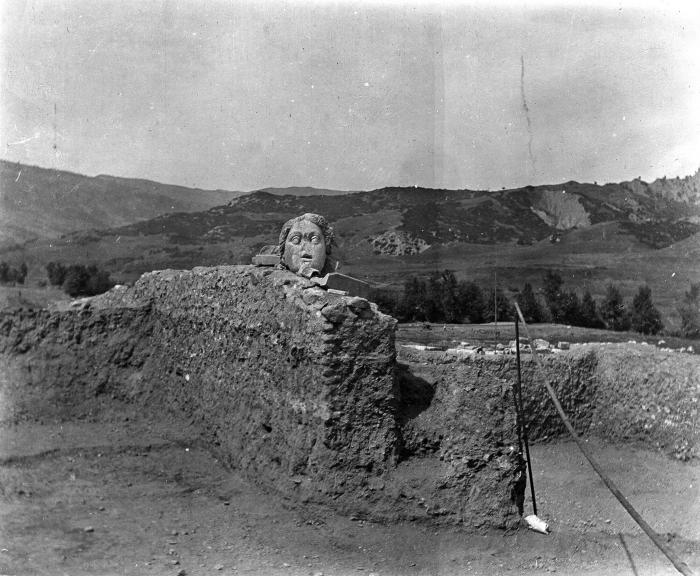Devasa Kadın Baş, Artemis?
- Dönem
- Ca. 140 AD? (Antonine), Roma
- Müze
- İstanbul Arkeoloji Müzeleri, 4038
- Müze Envanter No.
- 4038
- Sardeis veya Müze Env. No.
- IAM 4038
- Malzeme
- Mermer, Taş
- Eserin Türü
- Heykel
- Heykelin Türü
- Portre, Devasa Imparatorluk Portre
- Yerleşim
- Sardis
- Alan (Sektör)
- AT
- Açma
- AT
- Locus
- AT Precinct
- Bulunduğu Yeri
- Found by the first Sardis expedition at N side of AT.
- Tanım
The following description is taken from Sardis I, 147: "A colossal sculptured face, very well preserved . . . differs entirely from the similar heads found here; for, though in high relief, it was almost certainly never part of an entire head, but was attached to some kind of background. This raises an interesting question as to whether it may not have belonged to a gigantic frieze, like that of the Didymaion near Miletos, which is ornamented ... with colossal Medusa heads. This face --not that of a Medusa, but of a youthful, rather plump woman -- was executed to stand at a level much above the eye of the beholder, as the high arched eye-brows and rounded eyes plainly show. The nose is broken away, the small mouth open, the hair carved in soft waves."
G.M.A. Hanfmann thinks it is possibly an Artemis, and not a relief but an acrolith. The carving of the locks seems similar to that of Faustina (Cat. 251 Fig. 434). Buckler and Robinson (Sardis VII, 72, no. 58) tentatively considered the piece to be Faustina Minor. An identification as Lucilla, daughter of Marcus Aurelius, has also been suggested. The portrait dates to the Antonine period, ca. 140.
- Condition
Marble.
Nose broken off, otherwise very well preserved.
- Boyutlar
- H. 0.80.
- Yorum
- Ayrıca bakınız
- Kaynakça
- Published: Sardis I, 147, ill. 164. Butler also noted that "not far away fragments of a third colossal head, also female, were discovered; they represent part of the nose and mouth and part of the brow with a bit of wavy hair," cf. the discussion of colossal images under Cat. 79 and Cat. 102 (Figs. 196-197, 223-225).
- Yazar
- NHR





